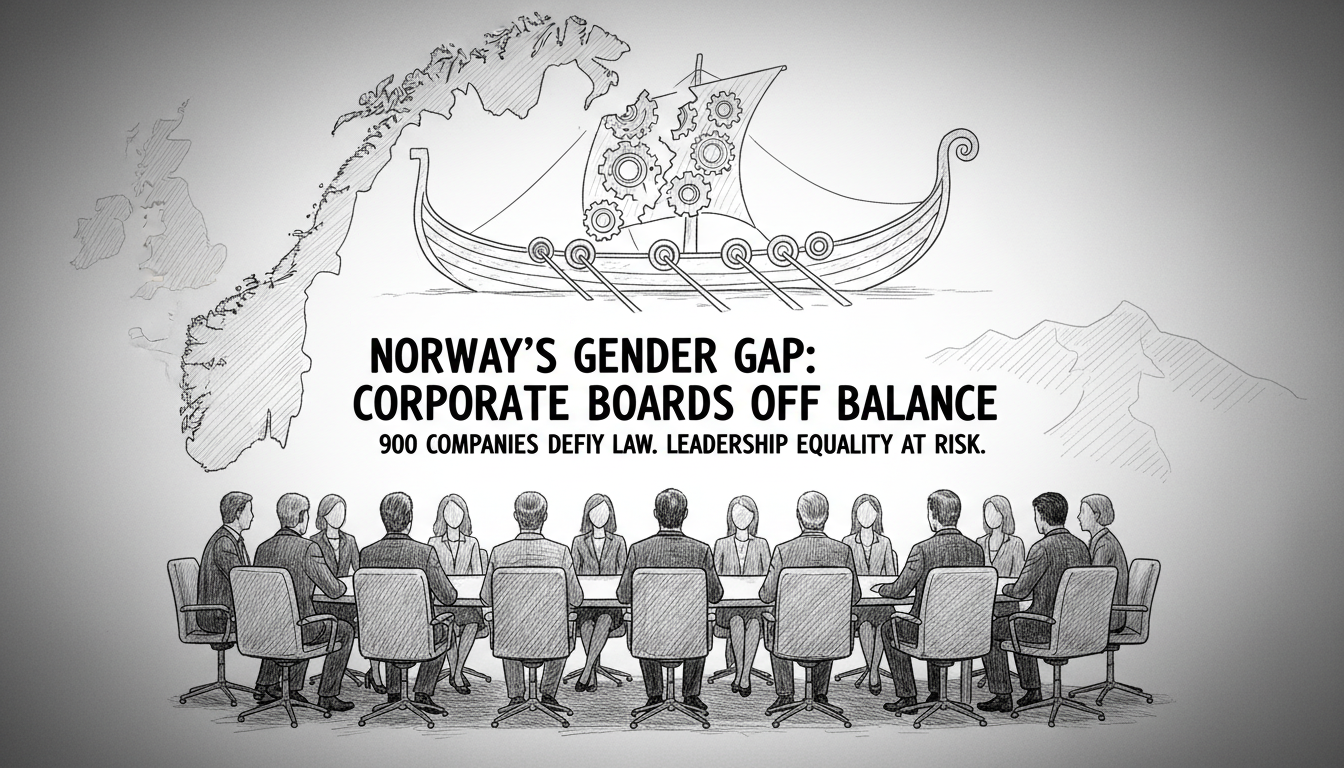Hundreds of Norwegian companies continue to violate national gender balance laws for corporate boards despite clear regulations. Recent data reveals approximately 900 publicly listed companies still fail to meet the legal requirements that took effect earlier this year.
The gender balance legislation requires corporate boards to maintain at least 40% representation for each gender. Both the Confederation of Norwegian Enterprise (NHO) and the Norwegian Confederation of Trade Unions (LO) participated in developing these rules alongside government officials.
Kathrine Haugland Martinsen, LO's equality and diversity leader, expressed strong concern about the widespread non-compliance. She stated that the government bears ultimate responsibility for ensuring companies follow the law. The regulation should not become a sleeping provision, she emphasized, calling for clear expectations and potential additional enforcement measures.
LO representatives find the high non-compliance rate surprising and unnecessary. They challenge the common excuse about difficulty finding qualified women, even in male-dominated industries. Board positions primarily require leadership, financial, or legal expertise rather than specific technical knowledge, they argue.
Nina Melsom, NHO's director for working life and collective bargaining, acknowledged the concerning numbers. While NHO supported the law's creation to promote equality and ensure practical implementation, she believes many companies simply lack awareness about the requirements. The complex regulatory environment makes compliance challenging for businesses navigating multiple legal obligations.
Both organizations agree that information represents the key solution. NHO has already conducted information campaigns through media appearances and internal channels but plans additional efforts. LO stresses that individual employers bear primary responsibility while expecting NHO to provide clearer guidance to member companies.
This situation reflects broader challenges in Norway's progressive equality policies. The country pioneered gender quota legislation for corporate boards nearly two decades ago, yet implementation gaps persist. International observers often point to Norway's equality measures as models, making current compliance failures particularly noteworthy.
The ongoing non-compliance raises questions about enforcement mechanisms. Without meaningful consequences, even well-designed policies risk becoming symbolic rather than transformative. The coming months will reveal whether increased information campaigns suffice or whether stronger measures become necessary to achieve the law's intended impact on corporate governance and gender representation.
Norwegian businesses face increasing pressure to align with national equality standards while maintaining competitive operations. The resolution of this compliance gap will signal how effectively Norway can translate progressive policies into practical business reality.

